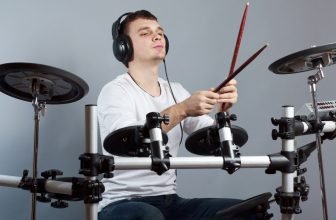How to Record Electronic Drums? – Techniques and Tricks
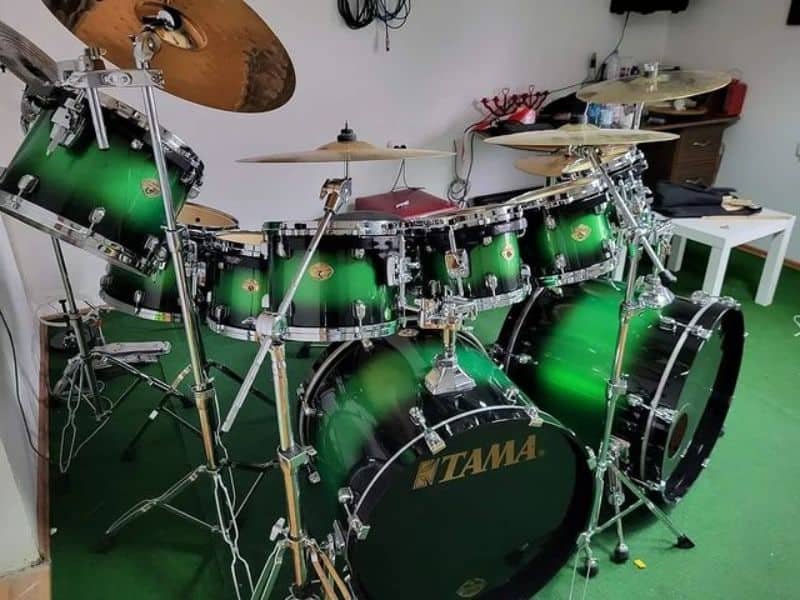
Electronic drums have come a long way in the past few years. They are no longer a simple substitute for acoustic drums, but a powerful tool in their own right. Thanks to advances in technology, electronic drums can now be used for a wide range of applications, from recording and live performance to composition and teaching.
Perhaps the most important application of electronic drums is recording. Unlike acoustic drums, which require a lot of space and can be difficult to mic up, electronic drums can be recorded in a small studio or even in your home. This makes them perfect for recording demos, album tracks, and other projects. Let’s have a look at how to record drums.
Method 1: Using Audio Interface
Contents
Equipment
If you’re looking to get into drums recording, you’ll need a few things to get started. First, you’ll need a drum audio interface that can connect to your drum module and record the audio signal. Most interfaces for drums will have a 1/4″ input that you can use for this purpose. If you’re using a USB audio interface, you may need an adapter to connect it to your drums.
Next, you’ll need a set of drums. If you don’t already have an electronic drum set, you’ll need to purchase one.
Once you have your audio interface and drums, you’ll need to connect them and configure them for recording. This process will vary depending on your specific equipment, so consult your manuals to make sure everything is properly connected.
Guide
Step 1
First, open your recording software and create a new track. Select the input that your audio interface is connected to and make sure that the track is set to record in mono.
Step 2
Now you’re ready to start playing your drums! Play a few beats and make sure that the levels are coming in correctly. If the levels are too low, you may need to adjust the input gain on your audio interface.
Step 3
Once you’re happy with the levels, hit record and start playing! When you’re done, stop the recording and listen back to see how it sounds. If you’re happy with the results, you can now export the file and share it with your friends!
- Allows for a wide range of sounds to be delivered through one instrument
- The interface is very user-friendly
- You can use a wide range of audio interfaces with it
- You may need to purchase additional equipment to get the most out of it
- The quality of the sounds may not be as good as some other electronic drum sets
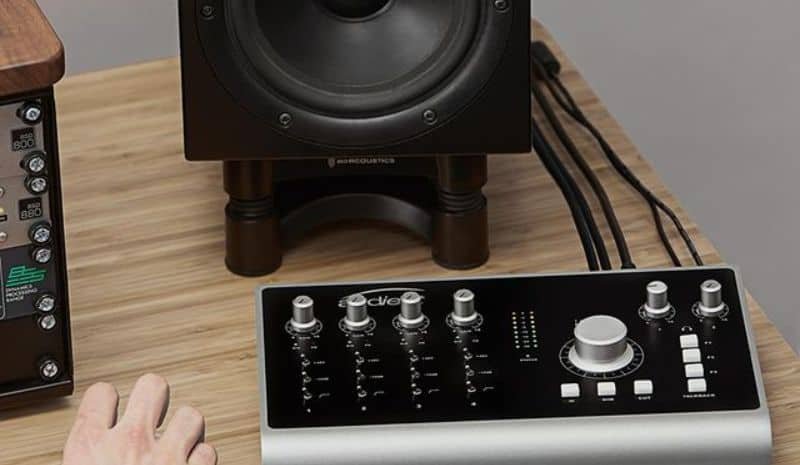
Method 2: Using MIDI
MIDI stands for Musical Instrument Digital Interface and is a protocol that allows electronic musical instruments and computers to communicate with each other. MIDI drums can be recorded using a MIDI interface, which is a device that converts the sounds of a drum kit into MIDI data that can be recorded onto a computer.
Equipment
When recording electronic drums, you’ll need a few pieces of equipment to get the job done. Firstly, you’ll need a MIDI interface to connect your electronic drums to your computer. You can use a regular audio interface if you have one, but a MIDI interface will give you more control over your drums.
You’ll also need a software sequencer to record your drums. There are many different sequencers to choose from.
Finally, you’ll need a pair of headphones to monitor your drums while you’re recording. This is essential, as you’ll want to make sure that your drums sound good before you record them into your sequencer.
With these tools, you’ll be able to create great-sounding recordings that will impress your listeners.
Guide
Step 1
Decide on the kind of MIDI interface you need. There are two main types of MIDI interfaces: USB and Firewire. USB is the most common type and is found on most computers. Firewire is faster but is less common.
Step 2
Choose the right MIDI controller. A MIDI controller is an electronic device that creates MIDI signals. These signals are then sent to a MIDI interface, which converts them into audio signals.
Step 3
Connect your MIDI controller to your MIDI interface. Most MIDI interfaces have both USB and Firewire ports. Simply connect the MIDI controller to the appropriate port.
Step 4
Connect your MIDI interface to your computer. USB interfaces can be plugged directly into a USB port. Firewire interfaces usually require an adapter, which can be found at most electronics stores.
Step 5
Launch your recording software. This will be the software that you use to record your audio.
Step 6
Set up your recording software. Consult the software’s documentation for specific instructions. In general, you will need to create a new track for each piece of audio you want to record.
Step 7
Play your drums! Hit the drums as you would if you were playing them live. The audio will be recorded into your software.
- Can use a wide variety of sounds
- Very versatile
- Can be edited and manipulated easily
- It May require additional equipment
- It May require some knowledge of music production
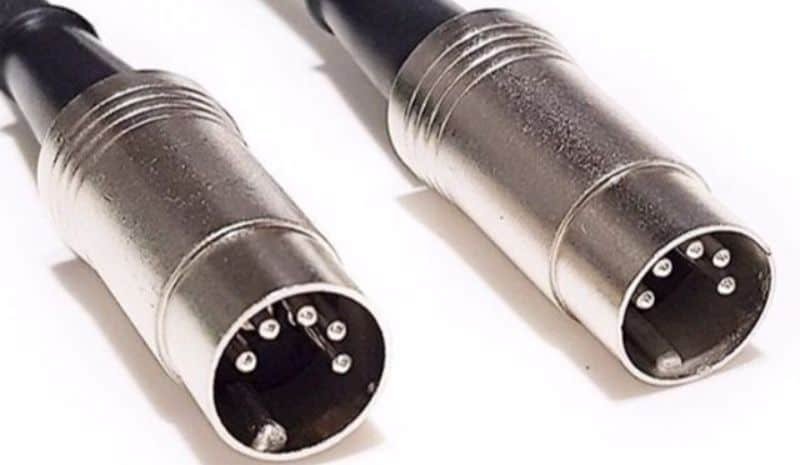
Method 3: Using USB
Equipment
If you want to record electronic drums using a USB, you’ll need a few things. First, you’ll need a computer with a USB port. Next, you’ll need a USB-compatible electronic drum set. Finally, you’ll need recording software that can record audio from a USB input.
Guide
Step 1
First, you’ll need to purchase a USB-compatible electronic drum set. There are many different types and brands available on the market, so do some research to find the one that best suits your needs and budget.
Step 2
Next, you’ll need to connect your electronic drum set to your computer via USB. Most electronic drum sets will come with all the necessary cables and connectors.
Step 3
Once your electronic drum set is connected to your computer, you’ll need to install any necessary drivers or software. Again, most electronic drum sets will come with all the necessary software.
Step 4
Now you’re ready to record! Open your chosen recording software and create a new project. Then, simply hit the record button and start playing your drums. When you’re finished, hit the stop button and your recording will be saved.
- Allows you to use electronic drums as a MIDI controller
- Can be used to create drum tracks for a DAW
- Can be used to create realistic drum sounds
- Limited sound options
- It May require additional hardware for full-fledged recording
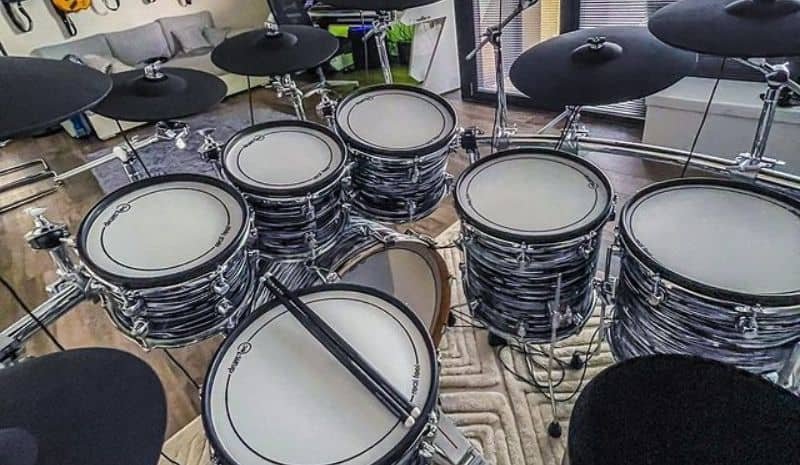
Method 4: Using Phone
Equipment
If you want to record electronic drums on your phone, you will need an app that allows you to record audio, and a pair of headphones or earbuds to listen to the recording while you play.
Moreover, you need a phone with a built-in microphone or an external microphone that can connect to the phone.
Guide
Step 1
Connect your phone to your electronic drum kit.
Step 2
Open your recording app and hit the record button.
Step 3
Play your electronic drums and make sure you are hitting the right notes.
Step 4
Stop recording when you are finished.
Step 5
Save your recording and share it with your friends.
- Can be very portable
- Can be relatively cheap
- It May not be as realistic as acoustic drums
- Can be difficult to set up and calibrate

Tips
There are a few things to keep in mind when recording electronic drums.
- Make sure you have a good quality drum kit. This is essential for getting a good sound.
- Make sure you have a good quality microphone. This is also essential for getting a good sound.
- Experiment with different microphones and placement.
- Make sure the electronic drums are properly tuned.
- Make sure the room is acoustically treated. This will help to improve the sound of the drums.
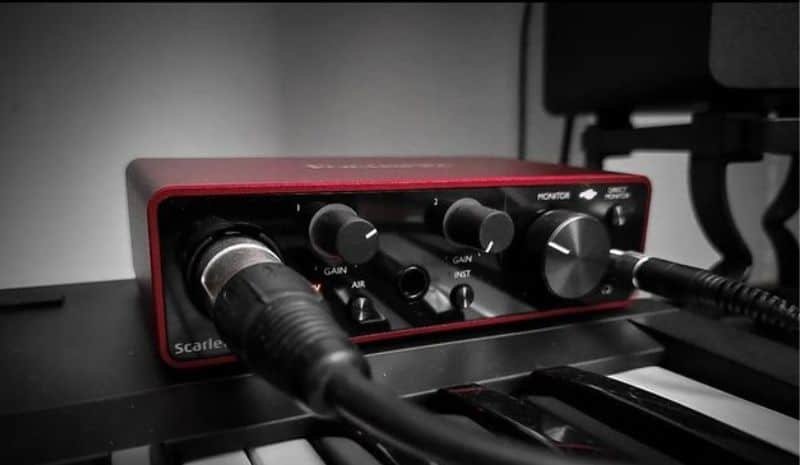
Frequently Asked Questions
What Are the Differences Between Acoustic and Electronic Drums?
The main difference between acoustic and electronic drums is that acoustic drums produce sound through the vibration of their drumheads, while electronic drums create sound using sensors and digital samples. Acoustic drums generally require more maintenance than electronic drums, and they are also more difficult to keep in tune. Electronic drums are typically more expensive than acoustic drums, but they offer a wider range of sounds and capabilities.
Are Electronic Drums Good for Recording?
Electronic drums can work well for recording, but it depends on the style of music. In general, electronic drums can provide a more consistent sound and can be easier to control than acoustic drums.
Do Professional Drummers Use Electronic Drums?
Many professional drummers use electronic drums, especially in genres such as hip hop, electronic dance music, and pop. While some drummers use electronic drums for their entire performance, others use them for specific parts of a song or to supplement an acoustic drum kit.
Сonclusion
Electronic drums are a popular choice for a lot of reasons – they’re quiet, they’re portable, and they’re a great option for people who live in apartments. But the most important reason to use electronic drums is that they sound great. They can be used to create a variety of different sounds and electric drum covers. Electronic drums can be used to create rhythms that are impossible to create with an acoustic drumset. They’re also great for recording. If you want to record your music, electronic drums are the way to go.


